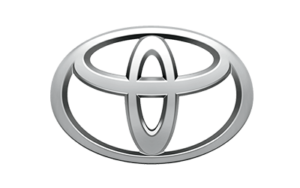
Understanding the Citroen Relay: An Overview
Common Issues with a Citroen Relay: The Citroën Relay, also known as the Citroen Jumper in some markets, is a light commercial vehicle that has been in production since 1994. Made by the French manufacturer Citroën, this vehicle is known for its reinforced structure, enhanced aerodynamics, and advanced technology. The framework can be adapted to suit many commercial requirements, making it an ideal choice for businesses in need of a versatile and reliable vehicle. Its fuel efficiency, coupled with low maintenance costs, provides an economical solution for businesses operating on a tight budget.
Powerful yet comfortable, Citroën Relay is designed for both urban city driving and long-haul journeys. Equipped with a variety of engines that range from 110 to 160 horsepower, Relay is known for its impressive performance. Its cabin is a noteworthy highlight, promoting driver comfort with ergonomic seating, an adjustable steering wheel, and a dashboard that is functional and driver-centric. Despite being a commercial vehicle, the Citroën Relay boasts plenty of passenger space, easily accommodating additional seating if required. However, like all other vehicles, even the Citroën Relay comes with its own set of problems, a few of which we shall delve into further in this article.
Problems Related to the Engine and Transmission
Over time, the engine and transmission system in the Citroen Relay have been observed to experience certain issues that can impact both the performance and safety of the vehicle. A common problem, often associated with high mileage vehicles, is the loss of engine power and sluggish transmission. This problem can surface as the vehicle ages or due to worn-out or damaged components. Other engine related issues that have been reported include overheating caused by thermostat failures, low compression or busted head gaskets, and occasionally some Citroen Relay drivers have experienced unexpected stalling while the vehicle is in operation.
The transmission system isn’t immune to issues either. One of the most frequently reported problems is a harsh or delayed gear transition. Another symptom that Relay drivers have cited is a stuck gear, which can cause the transmission system to operate abnormally or not at all. Other issues may include leaking transmission fluid which can result in gear slippage or a burnt smell, indicative of a potentially more serious issue. Maintenance and regular check-up of these vital systems is key in preventing these problems from hampering the longevity and performance of the Citroen Relay.
Brake System Challenges in Citroen Relay


With regards to the Citroen Relay, one notable area of concern is its brake system. Some of the most commonly encountered problems have to do with brake noise, performance issues, and brake wear. The brake noise typically manifests as a screeching sound, and may be down to the type of brake pad used or lack thereof. Performance issues, on the other hand, often present as a decrease in the brake’s responsiveness.
High wear on the brake pads is another frequent complaint, which may lead to the metal of the brake discs and the metal of the pads rubbing together, causing damage. The braking system is an essential component of any vehicle and therefore, though disturbing, these problems need immediate attention to ensure the safety of the vehicle’s occupants. Regular checks and swift response to these challenges can lead to the smooth operation of the Citroen Relay.
Electrical System Glitches in the Citroen Relay
In the sphere of advanced technologies and conferencing facilities, the Citroen Relay isn’t short of impressive features. However, like any other vehicle, it has some areas in which it doesn’t perform to its fullest potential. One such area is its electrical system. As complex and intricate as this particular system is, it can often encounter a range of malfunctions that may vary in severity – from uncooperative door locks to a complete loss of power.
Commonly reported issues about the Citroen Relay’s electrical system include malfunctioning dashboard displays and sporadic behavior of the vehicle’s automatic windows. Additionally, there have been instances where the central locking system either fails to lock all doors, or in worse cases, spontaneously locks the doors without any trigger. Although infrequent, there are also reports of relay’s onboard computer system failing, affecting the functionality of essential features like airbags. Despite these challenges, Citroen has made steady efforts to mitigate these problems with regular software updates and design tweaks.
Citroen Relay’s Fuel System: What Could Go Wrong?
The Citroen Relay’s fuel system, while robust, may encounter occasional issues that can impact the overall performance. One common concern that users often face includes an irregular fuel supply. This issue is typically associated with a malfunctioning fuel pump or clogged fuel injectors. These components, essential for efficient engine performance, can sometimes deteriorate over time, leading to inadequate fuel supply. This condition can cause the engine to misfire, or in worst cases, could prevent the vehicle from starting.
Another remarkable issue linked with the Citroen Relay’s fuel system involves the fuel sensor. This vital component determines how much petrol is in the tank, and then sends this info to the fuel gauge. Faulty sensors often cause the gauge to give incorrect readings which could leave the driver stranded without petrol. Additionally, a leaking fuel tank is a rare but potential problem, posing both safety and environmental risks. Regular maintenance checks and timely servicing can help keep these issues at bay.
Issues Associated with the Suspension and Steering Systems


The Citroen Relay, despite its robust character, has not been exempt from complaints about its suspension and steering systems. Drivers have reported unusual noises such as clicks, clunks, and squeaks from the suspension system, pointing to wear and tear in shock absorbers, struts, and other component parts. This occurrence, common in older versions of the Relay, often leads to a rough ride, decreased handling performance and in some cases, alignment issues.
On the steering front, some Relay users have experienced stiffness in the steering wheel, difficulty in turning, and occasional vibrations, particularly when driven at high speeds. These issues are usually indicative of power steering problems, which could range from a simple leak in the power steering fluid to a more complicated issue such as a failing steering pump. Over time, these issues can impact vehicle control which emphasises the need for prompt diagnosis and repair. These episodes underline the importance of regular maintenance checks to prevent a minor glitch from snowballing into a major, potentially dangerous situation.
The following are some of the common issues associated with the suspension and steering systems in Citroen Relay:
• Unusual noises from the suspension system: This is often due to wear and tear in component parts such as shock absorbers, struts, etc. The noise can take different forms like clicks, clunks or squeaks.
• Rough ride experience: An aging Citroen Relay may exhibit a rough ride due to worn out components in its suspension system. This could lead to decreased handling performance and alignment problems.
• Stiffness in the steering wheel: Some users have reported difficulty turning their vehicles because of stiffness in the steering wheel.
• Vibrations at high speeds: These vibrations are usually indicative of power steering problems which could be caused by a simple leak or more complex issues like a failing pump.
To prevent these minor glitches from escalating into major, potentially dangerous situations regular maintenance checks should be carried out.
Here’s what you need to do:
◦ Regularly check for any unusual noises coming from your vehicle’s suspension system.
◦ If you notice that your vehicle isn’t riding smoothly anymore or there’s decreased handling performance, it might be time for an inspection.
◦ Any difficulty turning or stiffness while using the steering wheel should not be ignored as this might indicate potential power-steering problems.
◦ Always keep an eye on how your car behaves at high speeds; if there are any vibrations, make sure they’re checked out immediately.
Remember that prompt diagnosis and repair can save you from bigger troubles down the line so don’t ignore even minor signs of trouble with your vehicle’s suspension or steering systems.
Air Conditioning and Heating Problems in the Citroen Relay
Despite being renowned for comfortable journeys, the Citroën Relay sometimes encounters challenges with its air conditioning and heating systems. Users frequently report sporadic bursts of hot or cold air, which can be a byproduct of compressor issues, leading to faulty air regulation. Other cases entail a complete malfunctioning of the HVAC system, exhibiting no heating during winter or cooling during summer, which makes for uncomfortable and stressful rides. This predicament is often traced back to failures in the blower motor or thermostat, disrupting the appropriate modulation of air temperature.
Detected problems also venture into the noise department, where loud noises are heard when the heating or cooling functions are operational. This is usually indicative of accumulated debris in the system or a worn-out fan. In some rather sporadic instances, nasty smells are reported when the system is running which might be a result of bacteria built up in the evaporator coil. Leakages in the condensate drain pipes can also lead to a smelly car interior, making the system less efficient. However, regular servicing and appropriate corrective measures can rectify these glitches and enhance vehicle performance.
Bodywork and Interior Complications in Citroen Relay
For many Citroen Relay owners, bodywork and interior complications are some of the most frustrating to deal with. These issues often contribute to the vehicle’s overall appeal and affect the level of comfort experienced on daily commutes. Rust is a common concern, especially in older models. Despite being well-maintained, some owners have reported noticing significant rust spots on the undercarriage and doorframes. This could potentially lead to more serious structural problems if not addressed promptly.
On the other hand, the interior of the Citroen Relay also has its fair share of complications. Owners have highlighted a host of issues, from faulty electric windows and uncomfortable seats to problems with dashboard instrumentation. Even the quality of material used inside the cabin has been criticised, with some users pointing out that the plastic trim feels cheap and prone to squeaking. These complications, although may seem trivial, can significantly reduce the overall user experience and may require attention to ensure a pleasant drive.






